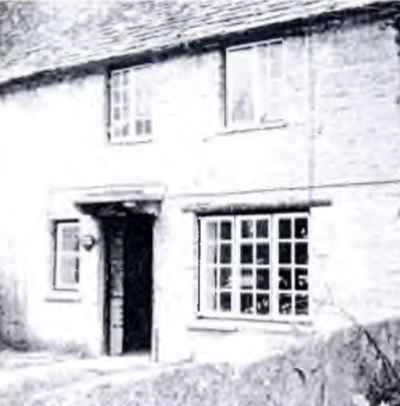This article by Norman Frost is taken from Volume 1 of the WLHS Journal Series. It was written in 1985 and in the detail there are charming reminders of 18th Century thrift and customs
+++++++++++++
Due to the kindness of the present owners, Mr and Mrs Mattingley, two members of the Society were invited to inspect this cottage when the interior was stripped down to the bare walls, prior to renovation.

Without interior partitions and the upstairs floorboards which were obviously later additions, the building itself was just a rectangular 17th century structure. However, surprises were to follow. Firstly, the walls were indented in about forty places with recesses about 18 inches deep and very much wider at the back than at the front or entrance. Reference to the archives at the County Museum showed their purpose; they were roosting holes for doves. The structure was built as a dovecote and perhaps its very name was trying to tell us this in the first place. The museum authorities were most interested in the building as this was only the second example of a square dovecot to be discovered in the county. Most dovecotes are of the familiar round style.
Steven Mattingley had also discovered a child’s shoe hidden in one of the roosting holes when the walls were plastered to convert the building into a dwelling. The shoe was in very good condition for its age and the sole still bore the mud with pieces of straw embedded, exactly as it was when the child came into the house, wearing it for the last time.
Our search for answers led us a little further afield this time – to Julia Swann at the Boot & Shoe Department-, Guildhall Museum, Northampton. The shoe, she told us, was a boy’s shoe made sometime about 1750. For the period it was a very good quality article and very well preserved. In the style of the period shoes were made to be worn on either foot, so that by swapping the shoes around they would last longer. Miss Swann also pointed out a piece of stiff leather stitched around the heel, suggesting that the little boy who wore it did not unfasten his shoes before putting them on and that the leather had been stitched on to prevent him breaking the heels down. The shoe was fastened by two tongues of leather passing across the instep and through a buckle which was not attached to the shoe in any way. The act of holding the two leather tongues firmly together kept the shoe in place.
Concealing a shoe or indeed any other personal article within the walls of a house was a common practice about this period. Almost every old dwelling has or has had some article buried within its walls. There are many reasons for this practice. It could be a good luck symbol; it was thought to identify the occupant with the dwelling and sometimes when the article was buried in the bedroom wall it was thought to ensure the arrival of many children. I suppose it is logical therefore to assume that this building was built in the 17th century and that about 100 years later the owner converted it to a cottage for one of his workers, a use which has continued ever since.
A point of interest does arise, however. A dovecote was the right of the farmer and no one else. His pigeons were for his benefit and could not be touched even when they ate his neighbour’s crops. Was this range of buildings part of an old farmstead? We know that the old dovecote at the end of the Terrace in Milton was part of Hawkes farmstead and we have records of twenty-one of these old farms or homesteads within the old village. There are more than likely many more to be discovered.

